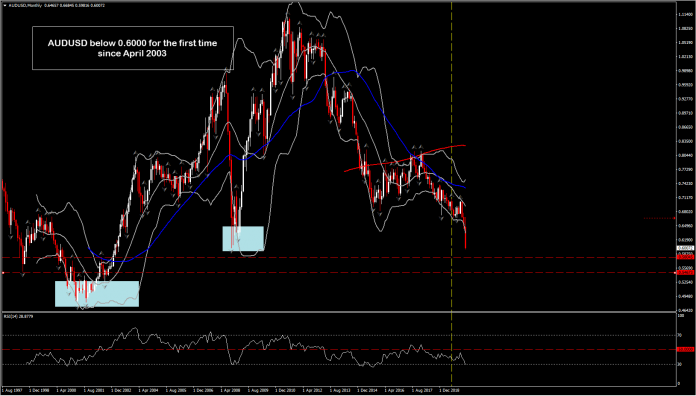The US Dollar ignored the undershoot in US Retail sales, but also the stronger than expected industrial production and US JOLTS data, focusing on virus headlines and risen virus concerns. Additionally, the Dollar’s advance has come despite sharp rate cuts by the Fed, which has brought zero interest rates to the US, with demand for cash Dollars ruling in the current highly volatile environment in financial markets.
The Dollar has rallied quite strongly, posting a 1.3% gain against the Euro and Sterling, and gains of more than 1% versus the Yen and Swiss franc. The narrow trade-weighted USD index (DXY), which correlates closely with EURUSD, is up 1%, climbing back above the 99.0 level for the first time since February 27th, and bringing the cumulative gain from the 18-month low that was seen on March 9th.
The Greenback also advanced over 1.5% in the case against the Australian Dollar, which brought AUDUSD below 0.6000 for the first time since April 2003, printing a low at 0.5982 after passing the 2008 low at 0.6007. As stated back in December 2019 ,
A break of the multi-year low at 0.6670 for AUDUSD still seems like a long term scenario, however if this becomes a reality due to a dovish statement tomorrow, then this could open the doors towards fresh lows, stretching the 2-year downtrend.
The 2-year lows have been reached with the March performance so far, while a stretch below 2008 lows could find Support as the 2000-2001 area, suggesting further sell-off for Aussie in the longterm.
Currently, the inflation-adjusted trade-weighted value of the Aussie Dollar (AKA the real effective exchange rate) is at its lowest since August 2002, having declined by just over 34% since the 35-year peak that was seen in April 2013. Given that the coronavirus remains in ascent, with the global economy tipping into recession, any change in the current trend looks improbable.
Data released earlier in the week, showing vertiginous 13.5% y/y and 20.5% y/y plunges in China’s industrial production and retail sales in the January-February period, provided an unambiguous bearish signal to the Australian currency, which is taken as a currency market China proxy. Sharp declines in commodity prices, amid tumbling demand out of China and globally, mean a sharply weakened terms of trade position for the Australian economy.
The RBA’s cash rate is at 0.50% currently, a record low, but is set to go to zero as soon as the next RBA board meeting in early April, if not before.
Click here to access the HotForex Economic Calendar
Andria Pichidi
Market Analyst
Disclaimer: This material is provided as a general marketing communication for information purposes only and does not constitute an independent investment research. Nothing in this communication contains, or should be considered as containing, an investment advice or an investment recommendation or a solicitation for the purpose of buying or selling of any financial instrument. All information provided is gathered from reputable sources and any information containing an indication of past performance is not a guarantee or reliable indicator of future performance. Users acknowledge that any investment in Leveraged Products is characterized by a certain degree of uncertainty and that any investment of this nature involves a high level of risk for which the users are solely responsible and liable. We assume no liability for any loss arising from any investment made based on the information provided in this communication. This communication must not be reproduced or further distributed without our prior written permission.


















